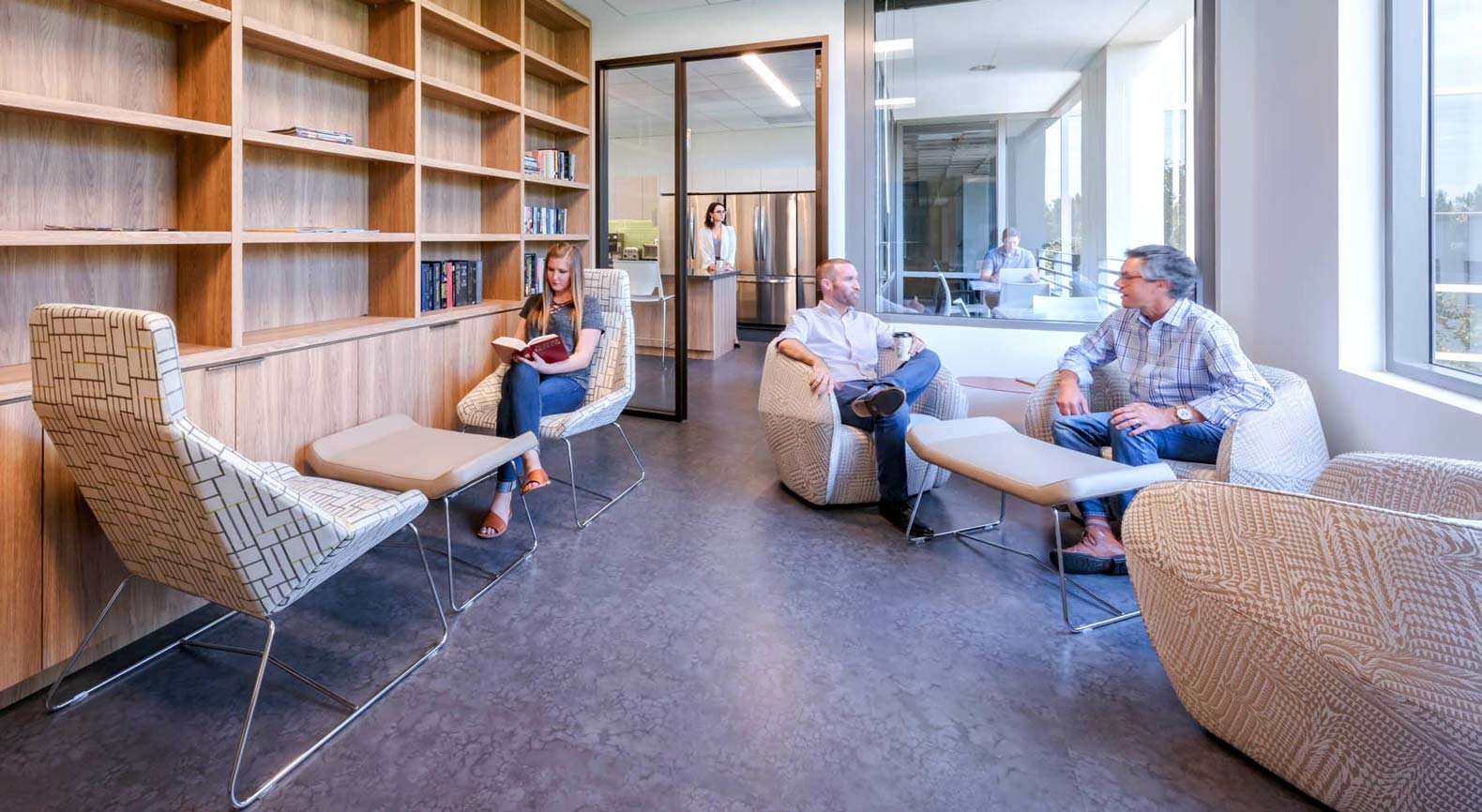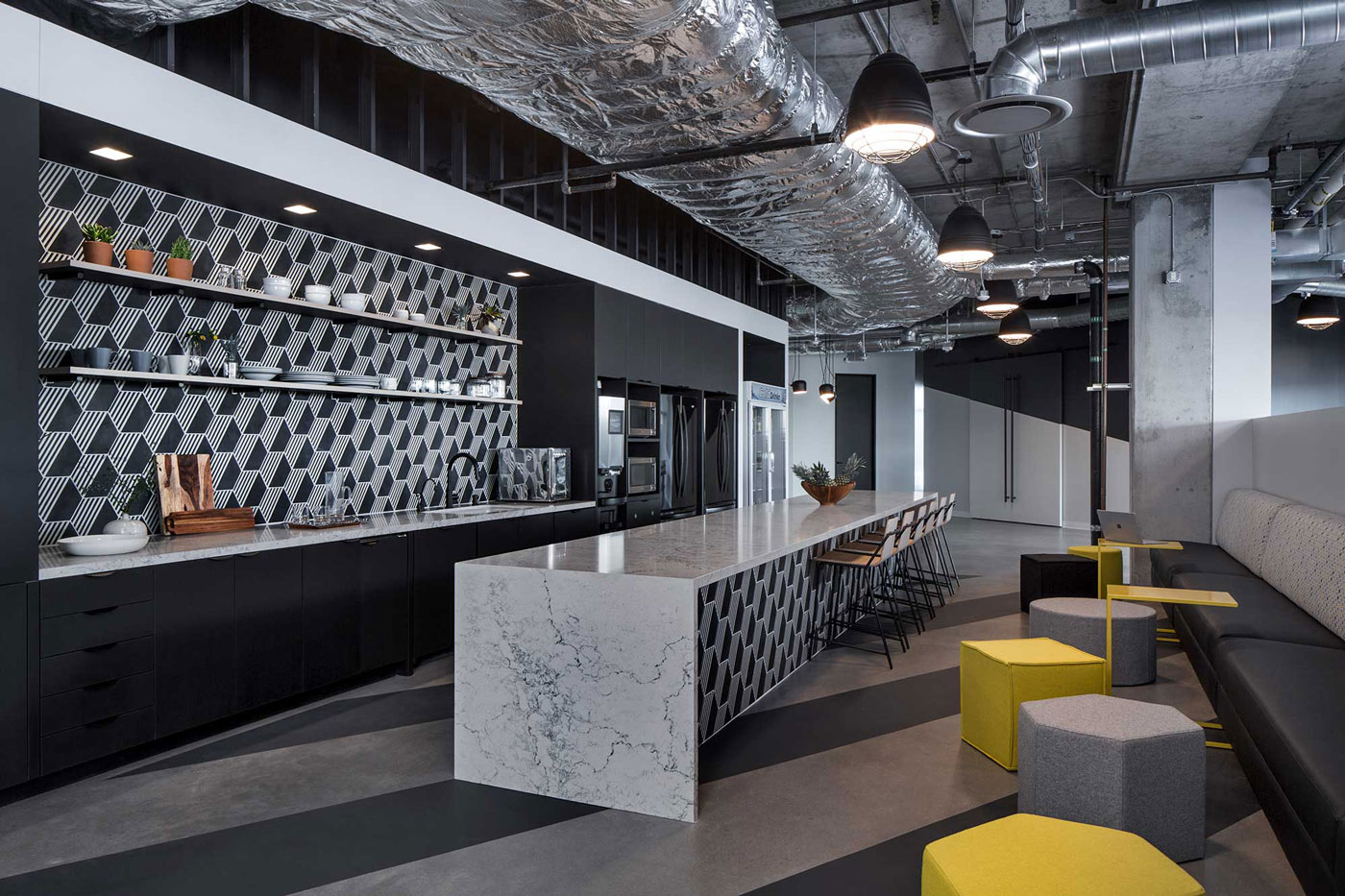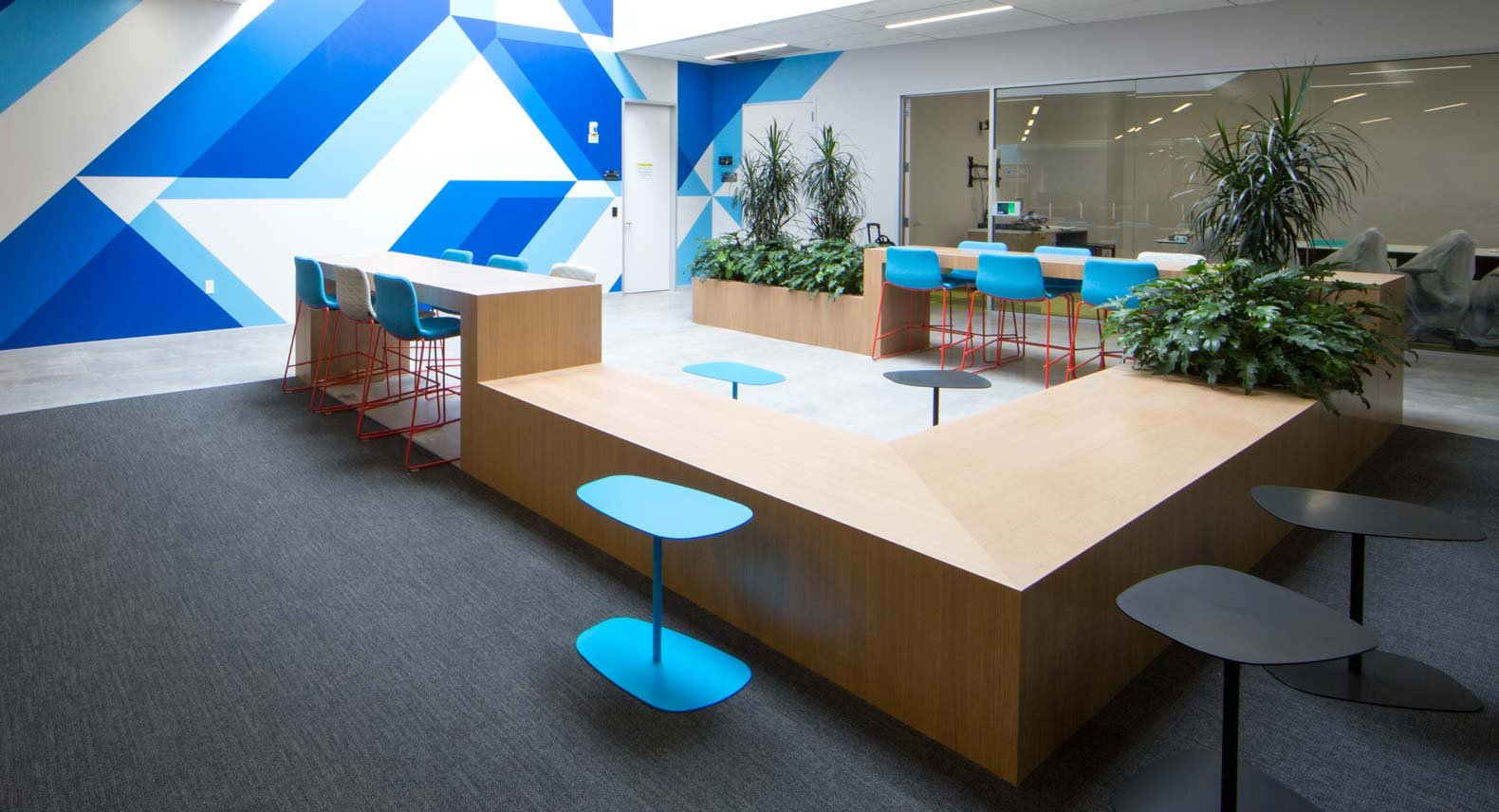Financial tech services firm Capital One recently released their 2018 Work Environment Survey. Polling 3,500 full-time employees across 5 major markets, with a subset nationwide, the company delved into the impact of workplace design on their productivity, creativity, and satisfaction. Conducted by Wakefield Research, they uncovered three key insights that architects, designers and furniture makers and providers ought to consider when coming up with workplace solutions.

1. Deliberate Design Remains Crucial to Attraction & Retention
“The revolution in workplace design seen in the past decade isn’t just a trend; employees’ views of the current state and overall importance of workplace design is steady year-over-year”.
We couldn’t agree more. We’ve been working on workplace design projects for over three decades and in the past 7-10 years, we’ve seen a deliberate shift in design-centric offices with the goal of attracting and retaining employees and clients. For an example of this, see our workplace case studies for Endemic Shine and Electro Rent.
Related Download: The Agile Office Transformation Handbook (free ebook)

2. Office Design Drives Productivity
“Significant majorities of office employees reported that more design-forward workplaces help them to be not only more creative and innovative, but also increase their productivity”.
In many of our design and planning meetings, the question of productivity is never far from our minds. From the custom-branded result we got for Dole Packaged Foods to the award-winning work we did for Aftershock Games, no matter what sector, companies strive to create innovative spaces in which employees can thrive. We’ve learned that creative environments are not only good for employee productivity, but also good for a company’s bottom line.

3. Employees Want Flexible Workplaces and Employers
“Today’s workforce wants to work for companies that accommodate all kinds of work styles with flexible workspaces and agile, forward-thinking design”.
So true! We’re living in a fluid world with multiple generations (and multiple working habits) cohabiting in the same office. Designing workplaces to meet those varying styles serves employees and companies well. Making agile working spaces available is the key to flexible design - be it a lounge area for the laptop-trotting set or an enclosed office for those workers who take a lot of private meetings. This type of intentionality in workspace design not only positions the employee to maximize his or her own productivity within that space, but it also speaks volumes of the organization providing that space…namely, that they understand the power of an engaged workforce, they value the individual worker, and they’re willing to provide them with a place where they can work best.
What Do These Findings Mean?
We believe that physical workplaces serve as one of the most valuable assets a business can have. The right workplace can inspire employees, promote company culture, facilitate innovation, and impress customers. This study reinforces what we’ve been observing and promoting. It means that office design should adopt agile office working solutions. That is, businesses should incorporate collaborative, social workspaces and private, focus-tasked areas into workspace design to boost organizational andemployee wellbeing, productivity and performance.
Read the full survey here: Capital One Work Environment Survey 2018 Results
Related Download: Improving Corporate Culture Through Workplace Design (free ebook)
To learn more about our services, get an estimate, or to schedule a consultation, contact us for a free consultation.
Feature Photo by LinkedIn Sales Navigator on Unsplash




